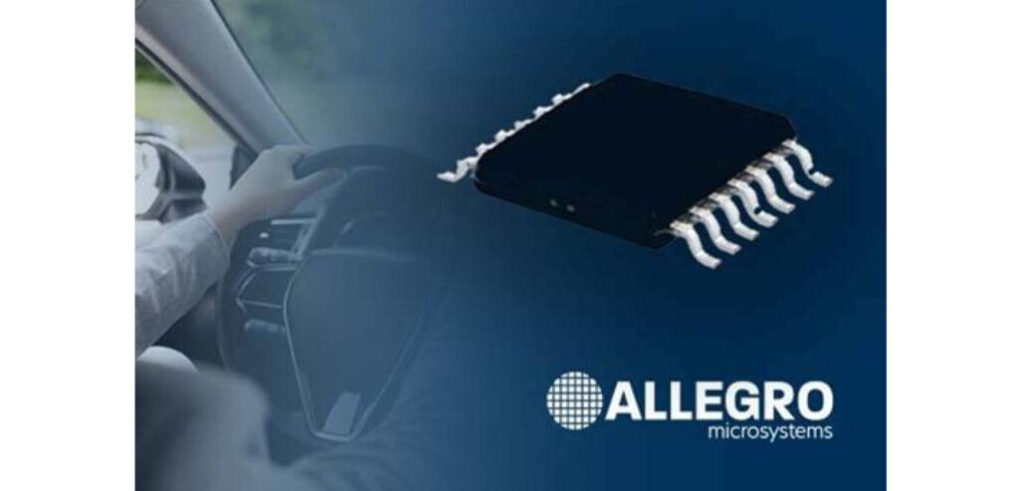US manufacturer Allegro Microsystems has launched a range of magnetic position sensors. Developed primarily for autonomous vehicle use, the A33110 and A33115 sensors combine the company’s vertical Hall technology (VHT) with cutting-edge tunneling magnetoresistance (TMR) technology in a single sensor package. The company states these sensors – which offer excellent redundancy – are the first of their kind to feature this technology combination in a single package.
Future automated and autonomous vehicles require advanced electric power steering (EPS) systems with precise motor control capabilities, as well as brake-by-wire or electromechanical braking systems with fast response time.
Most position measurement systems commonly use giant magnetoresistance (GMR), or Hall-effect sensors. Compared to the GMR equivalents, Allegro’s TMR-on-silicon technology offers improved resolution and accuracy, providing up to eight times greater sensitivity, the company states. Measured against traditional Hall-effect sensors, the improvement in resolution is even more pronounced.
Scott Milne, business line director for position sensors at Allegro, commented, “By integrating both vertical Hall and TMR elements in a single package, Allegro’s new line of sensors enable customers to meet those needs with a sensor that provides high resolution and heterogeneous redundancy along with integrated diagnostics. There’s nothing else on the market like them, and we think they are a game-changer for the industry.”
Allegro’s sensors provide magnetic angle sensing via both the primary (TMR) and secondary (vertical Hall) transducers, each of which are processed by two independent channels, each with independent regulators and temperature sensors. This configuration enables the high levels of safety and diagnostic coverage needed for automated driving, including on-chip channel-to-channel angle comparison and independent processing in digital signal paths, with no shared digital resources.
Advanced algorithms in the A33110 and A33115 deliver the fast response time, independent gain/offset correction, angle calculation, and linearization capabilities demanded by safety-critical ADAS applications. The A33115 also includes a turns counter that tracks motion in 90° increments and a low-power mode with a user-programmable duty cycle that reduces power consumption when the IC is in a key-off position.


